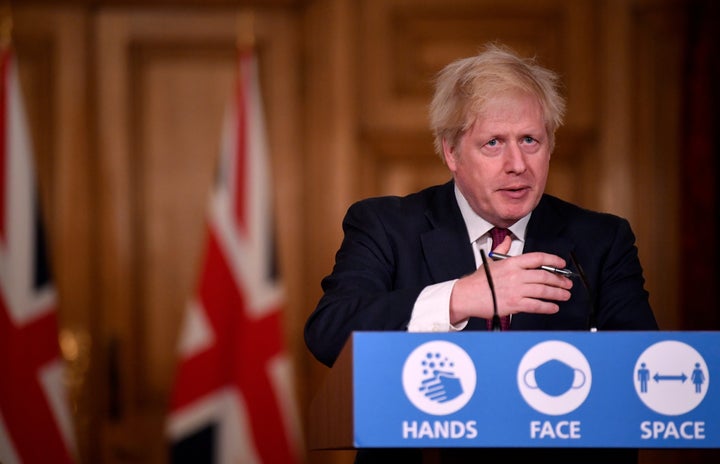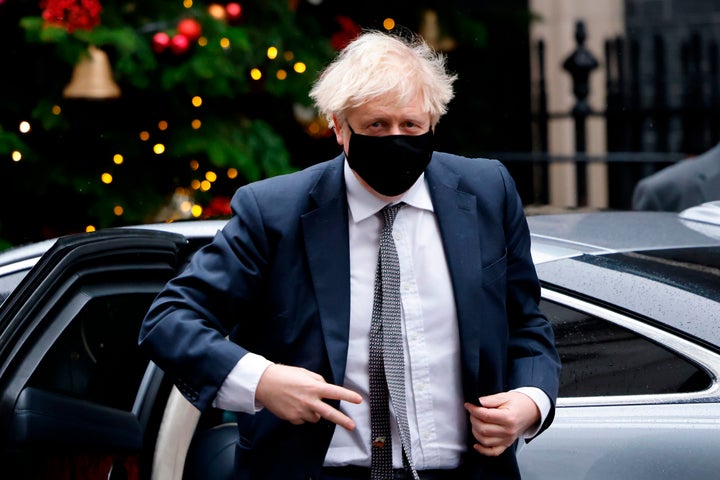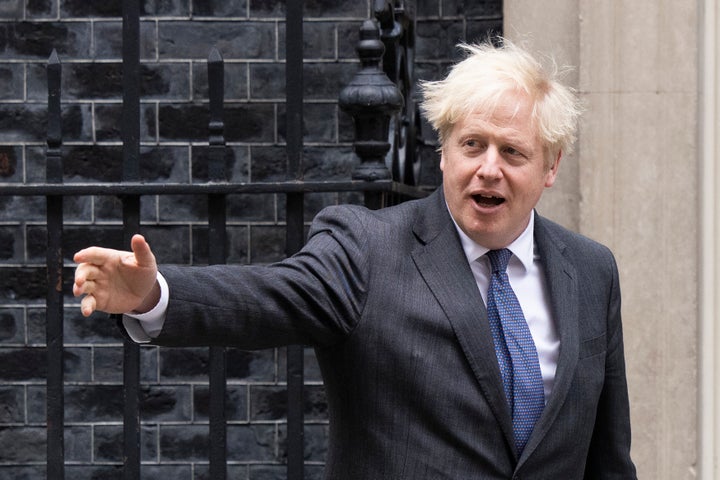On Saturday, Boris Johnson stood in front of the nation and insisted a new and more contagious strain of coronavirus had overtaken the government’s plans to allow some semblance of a normal Christmas in England.
London and huge areas of the south east and east of England woke up on Sunday under tough new Tier 4 restrictions while the rest of the country was told the five-day Christmas bubbles they were promised will only be permitted on Christmas Day itself.
At a Downing Street press conference, the PM said he was taking the actions with a “heavy heart”, but warned “without action... many thousands more would lose their lives”.
The announcement marked the end of Johnson’s nine-month quest to save Christmas but just how realistic – and responsible – was this in the first place?
Is hindsight a wonderful thing?
Before we get to the government’s specific messaging around Christmas, some context is needed to illustrate just how predictable this has all been.
On Sunday morning Matt Hancock said the “unpredictable” virus and the “unprecedented” scale of the pandemic meant the last minute changes to Christmas rules could not have been foreseen.
“The whole challenge of dealing with this pandemic, it being unprecedented, [is] we’ve had to learn about the virus all the way through and then we’ve got this new variant which the scientists are still learning about.”
Yet as far back as the summer, scientists were debating second waves and mutations of the virus.
Why? Because science has long known that influenza viruses mutate and evolve, and pandemics tend to come in waves.
Of eight respiratory virus pandemics since the 19th century, five have had two or more waves which usually happen in colder months regardless of when the first outbreak occurs.
In July, England’s deputy chief medical officer Dr Jenny Harries told ITV’s This Morning: “Myself and colleagues are very, very concerned about looking out for a potential second peak as we move into the autumn.”
A few days later an even starker warning was issued when a group of 37 experts predicted a “reasonable worst case scenario” in which almost 120,000 people could die in hospital this winter.
At the time Professor Ravi Gupta, of the Cambridge Institute for Therapeutic Immunology and Infectious Disease, told HuffPost UK: “The problem is a few events could lead to significant clusters of cases and we’re not sure how many it would take to lead to something to could get out of control.”
It’s now clear one of these events was a mutation of the virus but again, this was entirely predictable – there have already been mutations of the virus that have led a more virulent strain emerging.
As far back as July it was found there were two strains of the disease, the so-called Wuhan and Italian strains.
Yet despite all the warning signs, Johnson has spent the last nine months peddling a rosy future in which Christmas was more than a distinct possibility.
March
While he didn’t mention Christmas specifically, way back in March Johnson struck an optimistic tone, telling a Downing Street press conference he is “absolutely confident that we can send coronavirus packing in this country”.
His timeframe? 12 weeks.
At a time when vaccines were still in heir infancy, the crucial tool in the fight against the pandemic in the early days was a viable test and trace system.
The government said there’s would be “world-beating”. It wasn’t and, nine months and billions of pounds later, still isn’t.

Professor Deenan Pillay, virologist at University College London and member of the Independent SAGE committee, told HuffPost UK on October that the government’s early efforts were “completely wasted time” and “woefully inadequate”.
He said: “Test and trace is most effective when there are lower levels of infection in the community, so you can monitor what’s going on and make sure that you keep a lid on infection.
“It’s a real shame. The optimal way to use the benefits of the previous lockdown was to make sure that [the system] was in such a good place that we would be able to identify new infections very quickly.
“Now, of course, we’ve lost that time. We’re failing to really deal with the virus primarily through the lack of a functional test and trace.”
June/July
As the first lockdown was eased through June and into July and Johnson’s original 12-week plan expired, he continued to take an optimistic tone and talked of getting back “to something closer to normal life”.
“Even as we plan for the worst, I strongly believe we should also hope for the best,” he said.
“That means looking ahead with optimism – now extending our plan to lift the remaining national measures which have restricted our lives since March so we can get back to something closer to normal life.”

And it was on July 17 that Johnson first mentioned Christmas as he unveiled the next stage of a coronavirus recovery plan.
“It is my strong and sincere hope that we will be able to review the outstanding restrictions and allow a more significant return to normality from November, at the earliest, possibly in time for Christmas.”
The comments were distinctly at odds with much of the scientific community which was, as mentioned above, discussing the prospect of a second wave likely to begin in the Autumn.
September
Remember Operation Moonshot? That was Johnson’s hugely ambitious mass-testing plan that the PM said would allow us “to get some aspects of our lives back to normal by Christmas”.
It was then revealed it would cost a staggering £100 billion and lead to 400,000 people unnecessarily self-isolating during the holiday period.
Johnson has not mentioned Operation Moonshot since experts warned it would “fail miserably”.
October/November
In autumn, signs of the second wave began to emerge and a four-week national lockdown for England was announced at the end of October, coming into effect on November 5.
Despite this, Johnson kept the hopes of Christmas alive but acknowledged it was “going to be different this year, very different”
He added: “But it is my sincere hope and belief that by taking tough action now, we can allow families across the country to be together.
“Tis the season to be jolly, but tis also the season to be jolly careful.”

This aspiration of “as normal a Christmas as possible” was mentioned on the day Lockdown 2 came into force, while days later and following promising test results from the Pfizer/BioNTech vaccine, he spoke of the “distant bugle of the scientific cavalry coming over the brow of the hill”.
December
Earlier this month it was announced three different households would be able to mix from December 23 to December 28 and overnight stays would be allowed as part of the festive changes.
Just last week, Johnson said a “smaller Christmas is going to be a safer Christmas” and also suggested people should cut short their celebrations rather than enjoy the maximum permitted five days in a festive bubble.
It would be “inhuman” to ban Christmas, he added, but there had probably not been similar curbs “since Cromwell’s time”.
He added: “With the vaccine, and all the other measures that we are taking, we do know things will be better in this country by Easter and I’m sure that next year Christmas will be as normal for every family in the country.”
At the same time a number of leading scientists were speaking out against plans. Professor Stephen Reicher, of the University of St Andrews, said: “Right now we are heading towards disaster.”
David Nabarro, a World Health Organisation (WHO) special envoy working on Covid-19, said the price of such a relaxation “could well be very high”.
Last week
As recently as last week, Johnson was suggesting people could have “a merry little Christmas”, with the proviso: “And I’m afraid this year I do mean little”.
He said it would be “inhuman” to ban Christmas entirely and confirmed the festive bubble policy allowing households to mix would remain in place despite warnings it will lead to more deaths.
Yet two weeks ago, scientists had advised the government that Christmas relaxation rules would hit the elderly worst.
In a set of documents released on Friday, the Scientific Advisory Group for Emergencies (Sage) said on December 2 that modelling studies suggest there may be a higher proportion of cases in older and more vulnerable age groups during the festive period, which could lead to an increase in hospital admissions.
Saturday
Yesterday, Boris Johnson effectively cancelled Christmas for millions of people in England as he announced strict coronavirus restrictions, with London, the South-East and East placed under a new tier 4.
Deferring the Christmas plans he’d hinted at since March for a full 12 months, he said: “With the vaccine, and all the other measures that we are taking, we do know things will be better in this country by Easter and I’m sure that next year Christmas will be as normal for every family in the country.”
